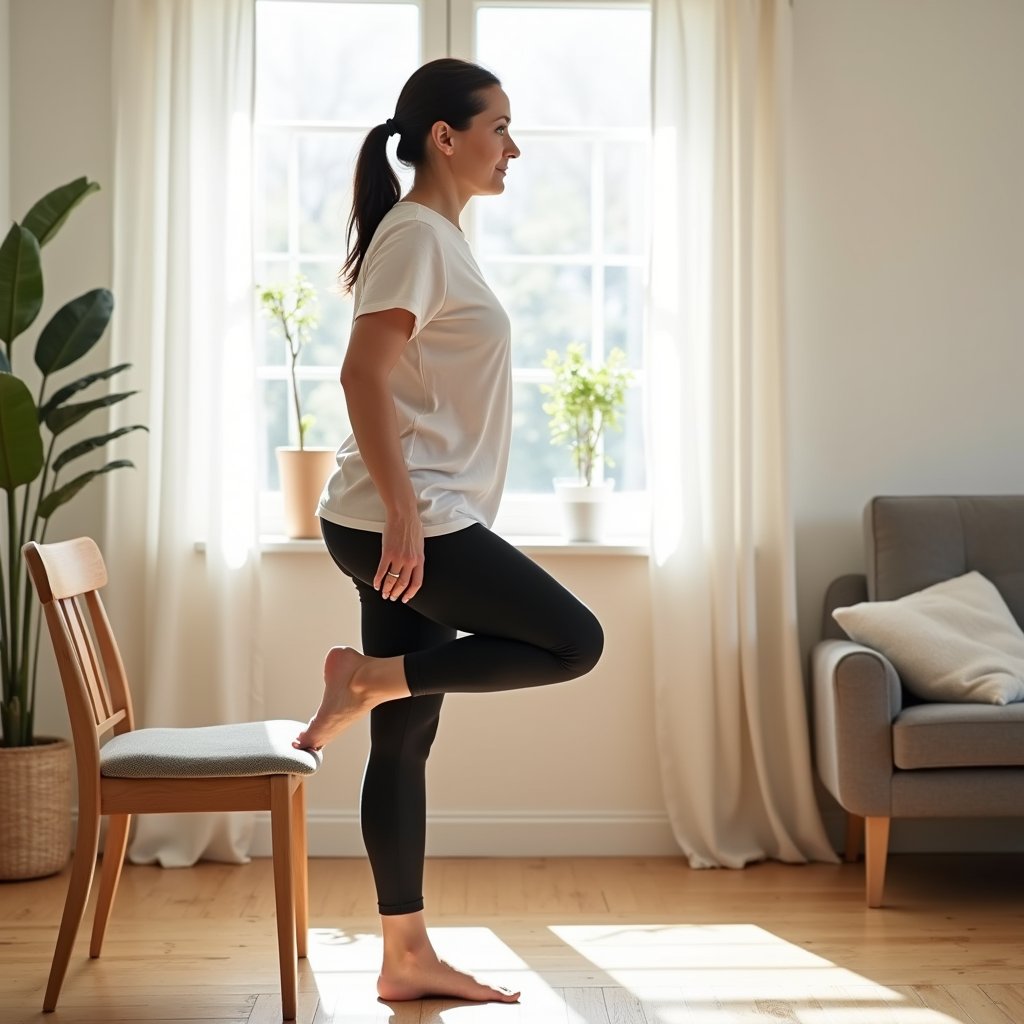Regular balance exercises can help manage your Parkinson’s symptoms and reduce fall risk. Start with static exercises like basic standing, tandem walking, and one-leg stands near a sturdy support. Progress to dynamic movements including figure-8 walking patterns and side-stepping exercises. Add multi-tasking activities that combine physical and cognitive challenges as you build confidence. Work with a physiotherapist to determine the right intensity level and create a personalized program that matches your abilities and goals.
Understanding Balance Challenges in Parkinson’s Disease

Why do Parkinson’s patients often struggle with balance? The disease directly affects your body’s natural reflexes that maintain upright posture and stability. When these automatic balance mechanisms are impaired, you’ll find it more challenging to stay steady during everyday activities.
People with Parkinson’s experience postural instability as a core symptom, which affects their ability to maintain equilibrium while standing, walking, or performing routine tasks. This balance impairment can greatly increase your risk of falls. However, research shows that these challenges aren’t insurmountable. Your balance can improve through targeted exercises that combine physical and cognitive elements. By practicing activities that challenge your stability like one-legged stands and weight-shifting exercises you can retrain your body’s balance systems and boost your coordination. Regular participation in activities such as yoga, tai chi, and aerobic exercise also helps rebuild these essential reflexes.
Essential Static Balance Training Techniques

Static balance exercises form the foundation of balance training for Parkinson’s patients, helping you maintain stability during everyday activities. Start with basic standing exercises by positioning yourself in front of a chair or table, feet shoulder-width apart, and hold this position for 30 seconds.
Progress to more challenging balance exercises like tandem standing, where you’ll place one foot directly in front of the other and maintain your position for 30 seconds. Remember to switch foot positions to train both sides in a similar manner. For advanced practice, try tandem walking by placing your heel in front of your toe for 20 steps while focusing on a fixed point ahead. The one leg stand exercise further boosts your balance lift one leg and hold for 10 seconds, then alternate sides.
Progressive Dynamic Movement Exercises

Moving beyond static exercises, dynamic movement training plays an essential role in managing Parkinson’s symptoms and reducing fall risk. From a stable starting position, you’ll want to focus on exercises that challenge your balance and coordination through varied movements.
Practice figure-of-8 walking patterns and side-stepping exercises, making sure to shift your weight deliberately with each movement. Include backwards walking and lateral weight shifts to target specific balance impairments common in Parkinson’s disease. You can progress to dual-task exercises that combine movement with cognitive challenges, but always prioritize maintaining proper balance and gait patterns.
If you haven’t already, consult a physiotherapist who can assess your needs and create a personalized program. They’ll confirm you’re performing these dynamic exercises safely and effectively while gradually increasing difficulty as your balance improves.
Multi-Tasking and Advanced Balance Activities
Building on your dynamic movement skills, advanced balance activities with multi-tasking components can fortify your extensive functional mobility. Dual tasking exercises that combine walking with cognitive or motor challenges effectively enhance your balance control. Try figure-of-8 walking around objects while performing additional tasks, but monitor your stability carefully.
You’ll benefit most from exercises that challenge both your physical and cognitive abilities simultaneously. However, it’s vital to stop any activity if you notice changes in your balance or walking pattern. Before attempting these advanced techniques, obtain a referral to work with a physiotherapist who can properly assess your capabilities and provide personalized guidance. They’ll help guarantee you’re performing these challenging balance exercises safely while optimizing their therapeutic benefits.
Customizing Exercise Intensity Levels for Success
Selecting the right exercise intensity is pivotal for managing Parkinson’s symptoms effectively. You’ll need to match your activity level to your symptom severity to guarantee safe and beneficial outcomes.
If you’re experiencing complex Parkinson’s Disease symptoms, start with low-intensity, chair-based exercises that focus on basic strength and movement patterns. As your symptoms progress, shift to mid-intensity activities like Nordic pole walking and dynamic balance training to amplify coordination. For mild symptoms, you can engage in high-intensity exercises such as vigorous aerobics or dance-based routines.
Remember that balance improvement is achievable at every intensity level. Chair-based Pilates and Qigong can build foundational stability, while moderate aerobics help develop dynamic balance. You’ll find success by choosing activities that challenge you appropriately without overwhelming your current capabilities.
Frequently Asked Questions
Which Exercise May Improve Balance on Parkinson’s Patients?
You’ll find significant balance improvements through a combination of tai chi exercises and resistance training activities. Start with static balance exercises like single-leg stands, then progress to dynamic movements that challenge your stability. You can bolster your balance by practicing tandem walking, weight-shifting exercises, and trunk rotations. Don’t forget to incorporate dual-tasking activities, which help train both your cognitive and motor functions simultaneously.
What Helps Parkinson’s Loss of Balance?
To help manage your Parkinson’s-related balance issues, you’ll want to focus on targeted standing exercises and regular stretching routines. Try weight-shifting exercises while standing, practice stepping over obstacles, and perform controlled reaching movements. You can also benefit from tai chi, which combines balance and controlled movements. Don’t forget to include daily stretching to maintain flexibility. These activities will help strengthen your postural muscles and improve your balance reflexes.
How Can I Improve My Parkinson’s Mobility?
You can improve your Parkinson’s mobility through consistent exercise that focuses on improved coordination techniques and strengthening core muscles. Practice static balance exercises like single-leg stands, and dynamic movements such as side stepping. You’ll benefit from activities like tai chi, yoga, or dance classes that combine balance with core strength. Don’t forget to include aerobic exercise and dual-task training to boost your overall mobility and coordination.
What Is the Best Exercise for Improving Balance?
You’ll get the best results by combining both static and dynamic balance exercises. Start with static exercises like tandem walking and single-leg stands to build your foundational stability. Then progress to more challenging dynamic balance exercises such as side stepping, figure-8 walking, and backwards walking. For maximum benefit, add dual-tasking activities to your routine – try walking while counting or carrying objects. These combinations will effectively enhance your comprehensive balance control.





